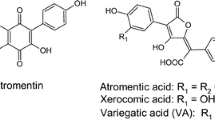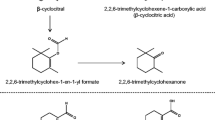Abstract
Convincing evidence demonstrating the involvement of activated forms of oxygen in the fungal degradation of LCC have been obtained by different research groups. Among the most active intermediates stands ·OH, which is the subject of this work.
We describe here a method for the accurate detection of ·OH based on the specific decarboxylation of benzoic acid. Using this method, we have demonstrated that the decarboxylating system is not diffusible in the culture medium, but is strongly associated with the mycelium. The 6-d-old fungus is able to form ·OH even after transferring to new medium. Cell wall fractions were not able to decarboxylate benzoate.
Another topic that has been considered is the role of hydroxyl radical in LCC degradation. In agreement with others, we have established that ·OH scavengers severely inhibit the degradation fo LCC when added to the cultures.
If LCC was pretreated by chemically generated ·OH, it turns out thatP. chrysosporium is able to use the solubilized fractions. However, in contrast to that of “native LCC” the metabolization of the solubilized moiety of LCC was not inhibited by OH scavengers.
It is concluded that OH may act only during the primary attack on LCC and not during the course of its subsequent degradative pathway.
Similar content being viewed by others
Author information
Authors and Affiliations
Rights and permissions
About this article
Cite this article
Bes, B., Ranjeva, R. & Gas, G. Activated oxygen is formed by the mycelium and is involved mainly in the primary attack of LCC byP. chrysosporium . Appl Biochem Biotechnol 9, 339 (1984). https://doi.org/10.1007/BF02798965
Issue Date:
DOI: https://doi.org/10.1007/BF02798965




